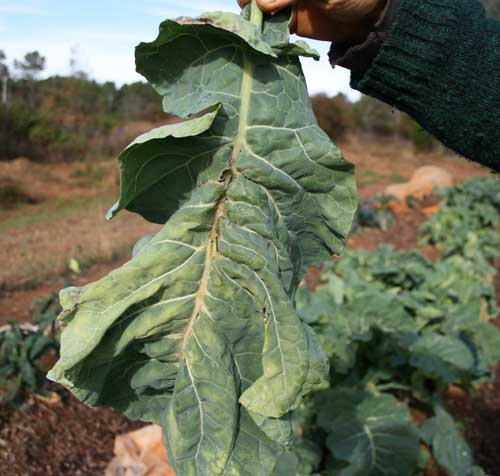Brassica Problem
go.ncsu.edu/readext?175229
en Español / em Português
El inglés es el idioma de control de esta página. En la medida en que haya algún conflicto entre la traducción al inglés y la traducción, el inglés prevalece.
Al hacer clic en el enlace de traducción se activa un servicio de traducción gratuito para convertir la página al español. Al igual que con cualquier traducción por Internet, la conversión no es sensible al contexto y puede que no traduzca el texto en su significado original. NC State Extension no garantiza la exactitud del texto traducido. Por favor, tenga en cuenta que algunas aplicaciones y/o servicios pueden no funcionar como se espera cuando se traducen.
Português
Inglês é o idioma de controle desta página. Na medida que haja algum conflito entre o texto original em Inglês e a tradução, o Inglês prevalece.
Ao clicar no link de tradução, um serviço gratuito de tradução será ativado para converter a página para o Português. Como em qualquer tradução pela internet, a conversão não é sensivel ao contexto e pode não ocorrer a tradução para o significado orginal. O serviço de Extensão da Carolina do Norte (NC State Extension) não garante a exatidão do texto traduzido. Por favor, observe que algumas funções ou serviços podem não funcionar como esperado após a tradução.
English
English is the controlling language of this page. To the extent there is any conflict between the English text and the translation, English controls.
Clicking on the translation link activates a free translation service to convert the page to Spanish. As with any Internet translation, the conversion is not context-sensitive and may not translate the text to its original meaning. NC State Extension does not guarantee the accuracy of the translated text. Please note that some applications and/or services may not function as expected when translated.
Collapse ▲|
Photos and text by Debbie Roos, Agricultural Extension Agent.
November 2007Diagnosis PendingThis problem is showing up in cauliflower, kale, and other brassicas on a new field on an organic farm. Lower leaves are yellowing and dropping off. The veins and mid-ribs of leaves become necrotic. Leaves are sometimes cupped with necrotic margins. Leaves show some mottling and chlorosis. Severely affected plants are stunted and weak and less cold hardy – many were killed with a recent frost (see photos below). The affected area is confined to a “hot spot”, radiating out from a central location. Initial pH was around 5.2 and the soil was amended in August with composted manure, hi calcium lime and wood ash. We suspect a nutritional deficiency exacerbated by acid soil.
This page last updated January 8, 2011. |











